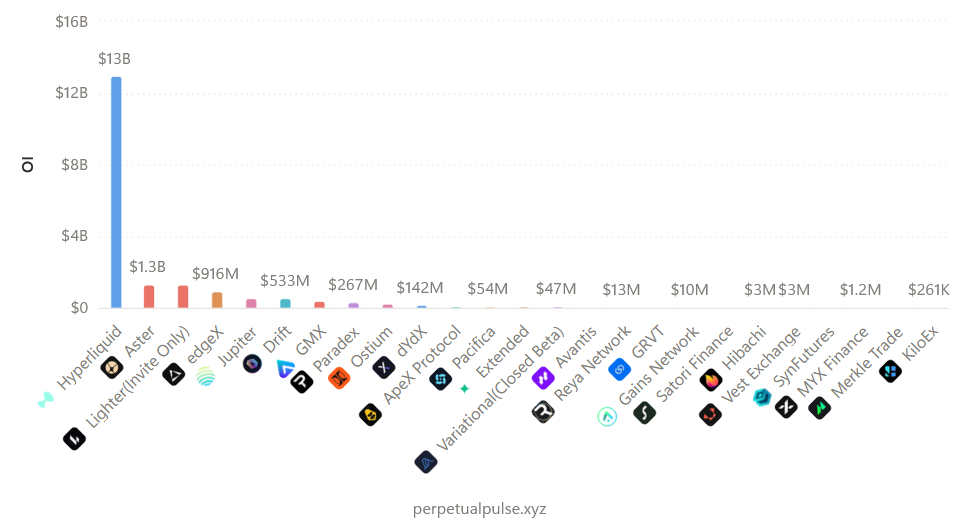Inside Bullet’s goal to compete with CEX perps
Bullet is leveraging Celestia for data availability

Bullet and Adobe stock modified by Blockworks
This is a segment from the Lightspeed newsletter. To read full editions, subscribe.
Every industry has its crown jewel worth fighting for. In crypto, that crown jewel is perpetual derivatives.
Perps give high-risk traders leveraged exposure to crypto markets, using periodic funding payments between longs and shorts to anchor prices to spot.
It’s a highly lucrative financial instrument that dominates trading flow. Perps account for at least 70% of CEX volumes and the majority of its revenues. Based on Kaiko data, 68% of all bitcoin trading volume in 2025 came from perps alone.
Given Solana’s stated ambitions to rival Nasdaq, the absence of the chain’s very own flagship perp venue to rival CEX perps stands out as a deficiency that’s hard to ignore.
Measured by open interest, Solana’s largest perps DEXs, Jupiter and Drift, come in at ~$533 million, about 4% of Hyperliquid’s open interest. And while Hyperliquid dominates the perps DEX landscape, its ~$300 billion in monthly volumes is still only roughly 6% of total CEX perps volumes.

Solana’s plan to compete on perps
To regain perp market share, Solana’s perp DEXs have taken divergent paths. Drift, for instance, is leaning on Jito’s newly launched Block Assembly Marketplace (BAM) to enable custom transaction-ordering logic.
Then there are teams like Bullet which have taken a far more radical approach, like building out a dedicated app-specific L2 rollup.
Bullet was previously Zeta Markets, the first order book perps DEX on Solana. In its heyday, Bullet commanded $10 billion+ in annual volumes. That product was shuttered in May to focus on the development of its appchain.
 Source: Blockworks Research
Source: Blockworks Research
The team decided to build an app-specific L2 to scale beyond Solana’s 400ms block time limitations, Bullet co-founder Tristan Frizza told me.
Bullet’s appchain architecture is a highly customized stack: It runs native Rust code without a general-purpose VM, pairs it with an application-specific sequencer and processes transactions on a first-in-first-out (FIFO) model.
Despite the absence of a general purpose VM, Bullet still targets verifiability with zk proofs using a zkVM to attest state transitions. The long-term plan is to eventually transit to a full zk rollup and eliminate bridging altogether.
Based on early testnet numbers, Bullet’s bespoke stack is showing impressive ultra-fast latencies of 1.2ms, coming out far ahead compared to Solana’s 400ms or even Hyperliquid’s 70ms block time latencies.
 Source: Bullet
Source: Bullet
Importantly, Bullet’s sequencer also offers cancel prioritization, the feature that enables traders and market makers to reliably cancel orders during periods of market volatility — what many have considered instrumental to Hyperliquid’s success.
Frizza pointed to the lack of cancel prioritizations as Zeta’s “Achilles heel” on Solana last year, where traders would have to often compete with MEV arbitrage bots to cancel transactions.
 Reverted transactions on Solana peaked at 72% in April 2024
Reverted transactions on Solana peaked at 72% in April 2024
“We had to pay so many priority fees to allow people to cancel their transactions. What if there’s a $50 million liquidation and that transaction is delayed [by] a minute? All this made me realize it’s difficult to scale and compete with Binance [on Solana].”
For data availability, Bullet is tapping Celestia, the team announced today at Token2049 Singapore.
“Solana is not optimized for a data availability use case, but for executing SVM transactions,” Frizza told me, pointing to Celestia’s multiple megabytes per second throughput as optimal for Bullet’s use case.
Bullet’s highly bespoke tech stack — customized execution, Celestia DA and an app-specific sequencer tuned to curb MEV — struck me as closer to the vision of Ethereum’s “modular” roadmap: spin up specialized chains for specific jobs rather than keep all state on a single base layer like Solana.
However, Frizza insisted that perps are the exceptional reason for L2s making sense.
“Perps may be the most complex DeFi use case — you need high performance, low fees, low latency and forcing it onto a general purpose chain that isn’t optimized for it is not ideal,” Frizza said. “What Bullet is optimizing for is…very hard to do on a geographically distributed validator set of 2,000.”
Frizza told me Solana’s global state machine still excels for most other use cases, so there’s little need for a general purpose rollup like Arbitrum atop Ethereum.
Slated for a mainnet launch later this year, Bullet is perhaps the most ambitious bet from a Solana-native project to contest perps at CEX scale.
Get the news in your inbox. Explore Blockworks newsletters:
- The Breakdown: Decoding crypto and the markets. Daily.
- 0xResearch: Alpha in your inbox. Think like an analyst.






